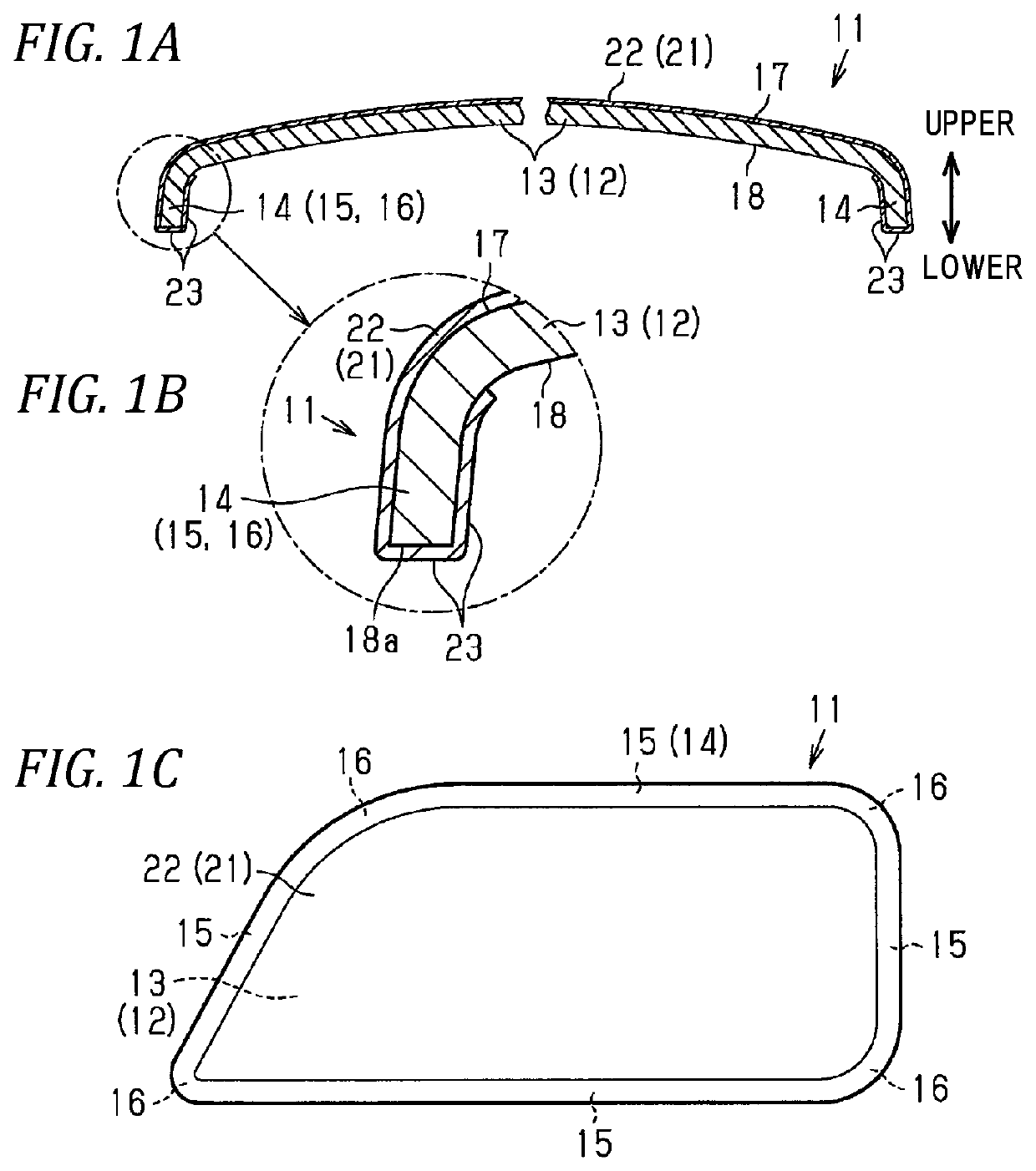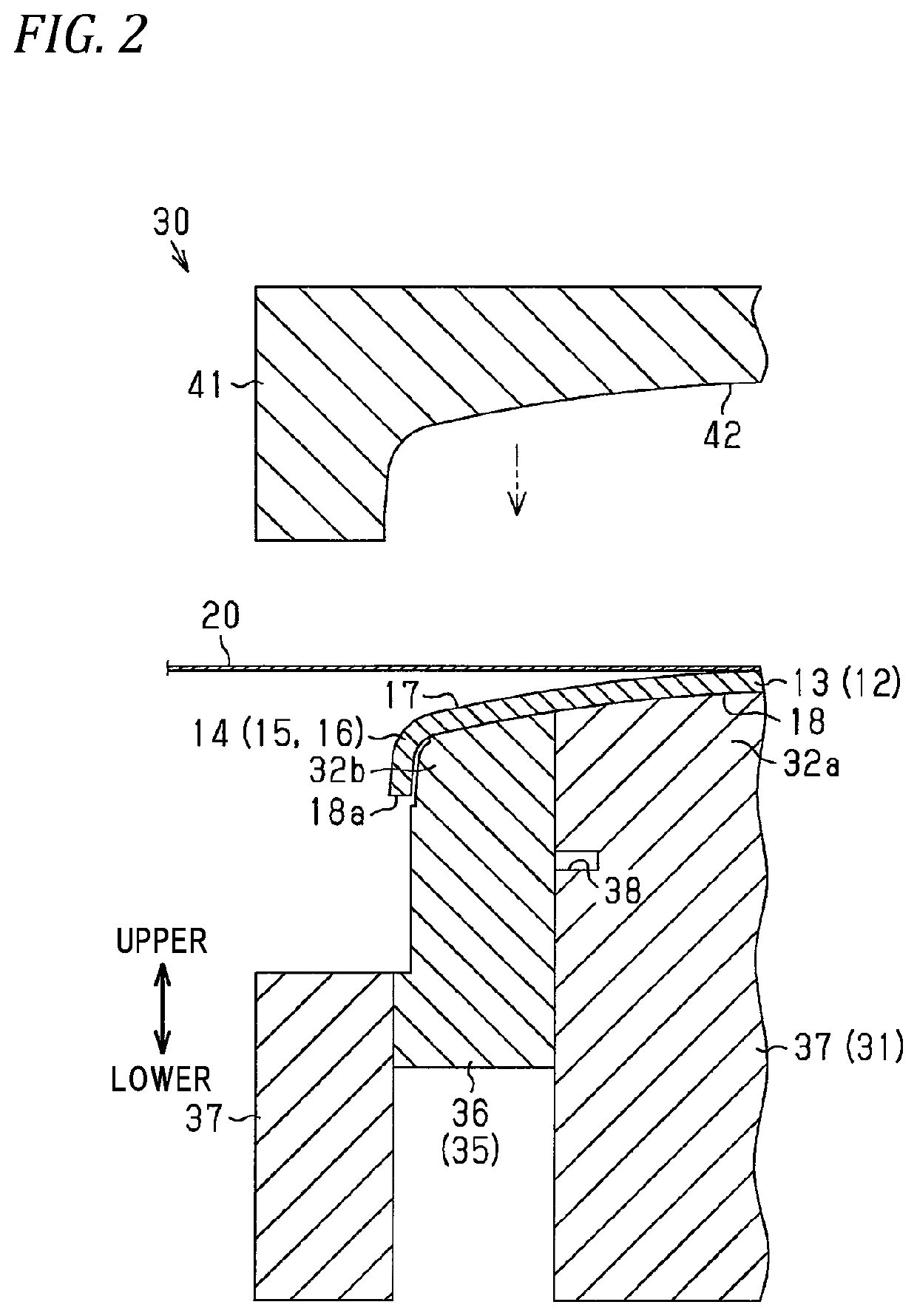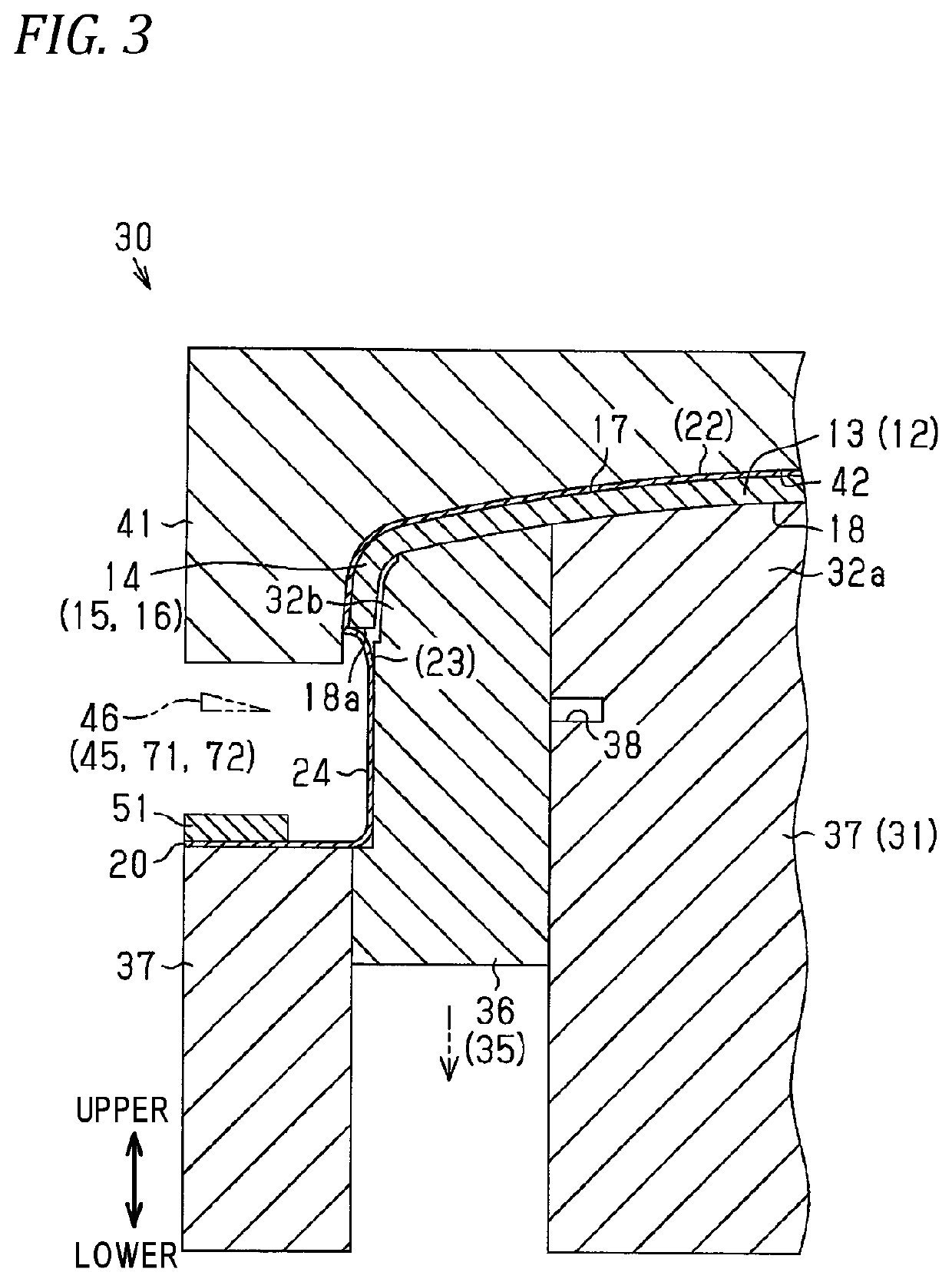Method of manufacturing product with skin
a manufacturing method and skin technology, applied in the field of skin manufacturing methods, can solve the problems of excessive elongation of increased manufacturing steps, and high cost of introducing a dedicated jig for winding the distal end portion of the skin, and achieve the effect of preventing the cutting of the surplus portion
- Summary
- Abstract
- Description
- Claims
- Application Information
AI Technical Summary
Benefits of technology
Problems solved by technology
Method used
Image
Examples
first embodiment
[0051]Hereinafter, a first embodiment of a method of manufacturing a product with a skin will be described with reference to FIGS. 1A to 9B.
[0052]First, the product with skin manufactured by the manufacturing method of according to the first embodiment will be described. As illustrated in FIGS. 1A to 1C, the product with skin 11 is formed by covering a base material 12 forming a skeleton portion with skin 21 having good decorativeness and hand feeling, and integrating them.
[0053]A main body portion 13 which occupies most of the base material 12 is gently curved such that the central portion bulges more toward the front side (upper side in FIG. 1A) than the peripheral portion. The base material 12 has a peripheral edge portion 14 around the main body portion 13. The peripheral edge portion 14 is curved toward the back surface of the base material 12 (lower side in FIG. 1A). The peripheral edge portion 14 has a plurality of linear portions 15, and a plurality of corner portions 16 whi...
second embodiment
[0088]Next, a second embodiment of the method of manufacturing a product with skin will be described with reference to FIGS. 10 and 11 in addition to the above FIGS. 5 and 6.
12>
[0089]The peripheral edge portion 14 around the main body portion 13 of the base material 12 includes a plurality of linear portions 15, and a plurality of corner portions 16 connecting the adjacent linear portions 15. In this respect, the second embodiment is common to the first embodiment. Further, each of the corner portions 16 is curved in an arc shape so as to bulge toward the side away from the main body portion 13. Each corner portion 16 has a circumferential length shorter than the length of any linear portion 15.
[0090]A plurality of first trim blades 71 and a plurality of second trim blades 72 are used as a plurality of trim blades in the cutting mechanism 45. Each of the first trim blades 71 is to cut a portion of the surplus portion 24 of the skin material 20 corresponding to the linear portion 15 ...
third embodiment
[0105]Next, a third embodiment of the method of manufacturing a product with skin will be described with reference to FIG. 12.
12>
[0106]Plate-like ribs 75 for enhancing the rigidity of the base material 12 are integrally formed at a plurality of positions on the back surface 18 of the base material 12 different from the positions where the distal end portions 23 closely adheres. Further, in the back surface 18 of the base material 12, at a portion where the distal end portion 23 closely adheres, and a plurality of positions different from a position where the rib 75 is formed, the plate-like ribs 76 used for gripping the base material 12 in the winding process are integrally formed. Each of the ribs 75 and 76 protrudes to the side (back surface) away from the front surface 17 of the base material 12.
41>
[0107]In the third embodiment, the manufacturing apparatus 30 not including the upper die 41 is used.
77>
[0108]In the vacuum forming die 31, a chuck mechanism 77 is provided at a positi...
PUM
| Property | Measurement | Unit |
|---|---|---|
| circumferential length | aaaaa | aaaaa |
| length | aaaaa | aaaaa |
| angle | aaaaa | aaaaa |
Abstract
Description
Claims
Application Information
 Login to View More
Login to View More - R&D
- Intellectual Property
- Life Sciences
- Materials
- Tech Scout
- Unparalleled Data Quality
- Higher Quality Content
- 60% Fewer Hallucinations
Browse by: Latest US Patents, China's latest patents, Technical Efficacy Thesaurus, Application Domain, Technology Topic, Popular Technical Reports.
© 2025 PatSnap. All rights reserved.Legal|Privacy policy|Modern Slavery Act Transparency Statement|Sitemap|About US| Contact US: help@patsnap.com



